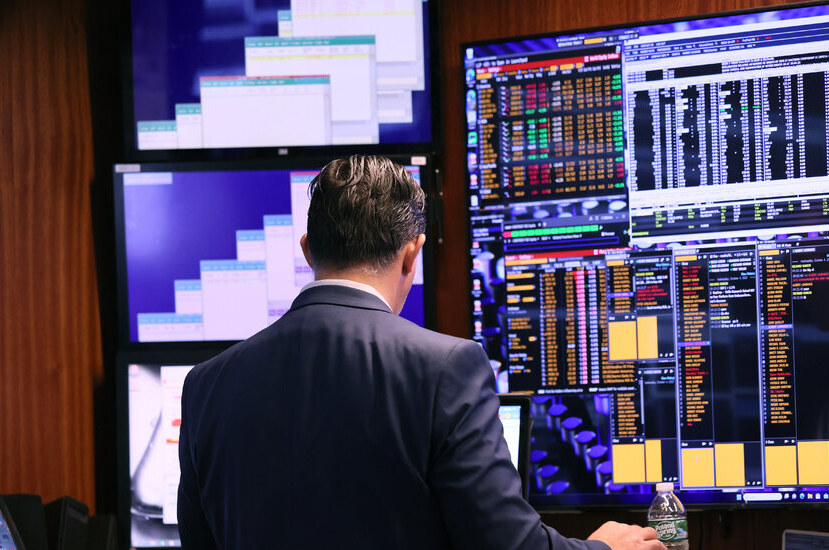Markets fluctuated sharply on Friday after a fresh report on hiring pointed to a much stronger labor market than economists had expected, intensifying concerns among investors that the Federal Reserve would need to clamp down on the economy more forcefully to bring inflation under control, but also offering some comfort that any additional pressure would be set against a resilient backdrop.
The Labor Department reported that employers added 336,000 jobs in September, far more than the 170,000 additional jobs economists had predicted. “It’s a showstopping number,” said Lauren Goodwin, an economist at New York Life investments.
The reaction on Wall Street was most evident in the $25 trillion market for U.S. Treasuries, where yields on government bonds had already been climbing sharply over the past couple of months. Persistently strong economic data has cemented an expectation that the Fed will need to keep interest rates elevated for longer than previously thought to complete its aim of slowing inflation.
On Friday, the yield on the 10-year Treasury bond, a benchmark interest rate that underpins borrowing around the world, briefly shot up to 4.88 percent, its highest level since 2007, before easing back to 4.80 percent. In late July, that yield, indicative of the cost of borrowing for the United States government, stood at 3.75 percent.
The yield on the 10-year Treasury bond is a crucial input to virtually every other long-term interest rate in the world, making it a cornerstone of the global financial system. Higher treasury yields indicate higher costs for consumers and businesses going forward, in turn weighing on company valuations in the stock market.
“If yields keep moving higher, they’re going to create more restraint on the economy,” said Drew Matus, the chief market strategist at MetLife Investment Management.
The dollar rose alongside higher rates, climbing around 0.2 percent and extending a trend since July that has seen the currency rise to its strongest level in roughly a year, adding to the headwinds for many companies that earn their income overseas.
The reaction in the stock market was also significant, said traders, exemplifying investors’ sensitivity to interest rates, and also the hope that corporate America’s resilience could continue, even if policymakers are prompted to further restrict the economy.
The S&P 500 recovered from early losses to rally 1.2 percent for the day, rising as the yields on Treasury bonds eased. The rebound was enough to to end a streak of weekly declines that had begun at the start of September.
Companies more dependent on the outlook for the American economy initially suffered a more severe reaction among investors but even there, trading reflected the recovery in the Treasury market as the day went on. The Russell 2000 Index of smaller companies rose on Friday but was lower for the week after turning negative for the year on Monday. The S&P 500 is still roughly 12 percent higher than it was at the start of 2023.
Investors and analysts noted that the immediate market reaction would take time to settle, as rapid, automated trading, programmed to react to specific levels from data such as the jobs report gave way to a broader group of investors entering the market.
Given the data also extended a broader sell-off, investors had already dialed back their bullishness, analysts said, making for a softer change in sentiment reflected in the immediate price moves.
Investors are also trying to make sense of conflicting signals for the long-term outlook of the economy.
On the one hand, the fresh jobs data points to a resilient economy, tempering immediate concerns about an economic downturn. However, a stronger than expected economy also suggests the Fed will need to do more to slow it down and get inflation under control. That could mean further headwinds for companies and consumers ahead, fanning fears that the Fed could go too far, tipping the economy into recession.
Although the number of jobs added to the economy rose substantially, wage growth came in below economists’ estimates. That adds to a narrative of a tougher time ahead for consumers, just as some consumer-facing companies gear up for the holiday sales season.
“The economic narrative is one that is difficult for consumer incomes and corporate profits ahead,” said Ms. Goodwin.
The speed of the sell-off in the Treasury market is also “worrying,” said Gennadiy Goldberg, head of U.S. rates strategy at TD Securities, raising concerns about the potential for the plumbing of financial markets to come under strain as swathes of investors try to reorient themselves following each additional piece of economic information. That fear has become especially acute following previous ructions in the Treasury market and in other government bond markets around the world.
And there could still be further to go. Even before the fresh jobs data on Friday, some Fed policymakers had maintained a preference for further interest rate increases. Investors, however, are not so sure, maintaining only a low chance that the Fed raises rates again when it meets next month.
“I think the market may still be underpricing the risk the Fed hikes in November,” said Ms. Goodwin. “It’s that move that concerns me.”






Leave a comment